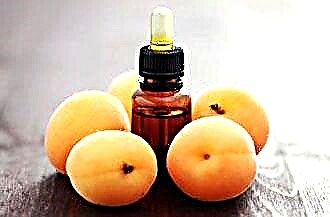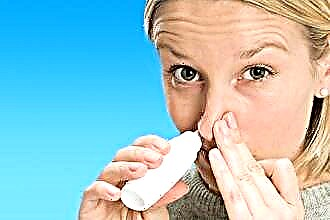Hyperplasia of the lymphoid tissue of the pharyngeal tonsil leads to nasal congestion and difficulty in nasal breathing. Chronic adenoiditis in children develops against the background of weakened immunity with frequent acute respiratory viral infections, exacerbations of tonsillitis, pharyngitis or sinusitis.
 Predisposing factors include:
Predisposing factors include:
- lack of breastfeeding or its rapid cancellation;
- improper nutrition;
- hypovitaminosis;
- frequent hypothermia;
- unfavorable living conditions (dampness, cold, dry air);
- breathing polluted air;
- hormonal disorders.
The growth of the tonsil is possible up to 8 years, after which the lymphoid tissue undergoes sclerotic changes and gradually atrophies.
The tonsils of the pharyngeal ring stand in the way of infection into the body, periodically increasing to enhance protection. However, due to frequent attacks of pathogens, the lymphoid tissue undergoes some changes, irrevocably increasing in volume due to tissue hyperplasia. The constant presence of infection on the tonsil mucosa maintains inflammation, due to which adenoiditis becomes chronic.
Clinically, the disease manifests itself:
- snoring in a dream;
- nasal congestion;
- difficulty or complete absence of nasal breathing;
- restless sleep, which makes the child moody and sleepy in the morning;
- subfebrile fever;
- headache;
- rapid fatigue;
- physical underdevelopment;
- carelessness, decreased school performance.
The chronic course of pathology leads to the appearance of a nasal voice, the child utters words indistinctly and cannot pronounce some letters. Gradually, the child's face becomes dejected, tired, the lower jaw drops and the bite changes. This condition is called "adenoid face".
Therapeutic direction
Treatment of chronic adenoiditis in children is prescribed exclusively by a doctor, choosing the most effective drugs for each case individually. A good effect can be achieved if complex therapy is carried out using local and systemic drugs.
| Group of medicines for local effects | Drug name | Healing effect |
|---|---|---|
| Nasal sprays for rinsing the nasopharynx | No-sol, Aqua Maris, Humer | Cleansing the mucous membrane from mucus, purulent crusts, microbes. |
| Nasal drops | Vibrocil, Nazivin, Delufen, Collargol, Otrivin, Lazovin | Vasoconstrictor, astringent action, reduction of mucosal edema, discharge, improvement of nasal breathing. |
| Immunomodulators | Nazoferon, IRS-19 | Increasing local immune defense, reducing mucosal edema, restoring nasal breathing |
| Antiseptic solutions for rinsing the nasopharynx and rinsing the throat | Miramistin, Furacilin | Removing pathogenic microbes, reducing inflammation. |
| Group of funds for systemic action | Name | Healing effect |
|---|---|---|
| Antibacterial (with confirmation of bacterial inflammation, according to the results of an antibioticogram) | Sumamed, Augmentin, Cefuroxime | Fight against bacterial pathogens. |
| Antiviral (if viral infection is confirmed) | Anaferon, Otsilokoktsinum, Aflubin | Elimination of viral pathogens, increased immune protection. |
| Antihistamines | Suprastin, Loratadin, Zodak, Tsetrin | Reduces swelling of the mucous membrane, normalizes nasal breathing. |
| Homeopathic and herbal remedies | Lymphomyosot, Sinupret | Reduce hyperplasia of lymphoid tissue, reduce mucosal edema, inflammation |
| Multivitamins | Aevit, Supradin, Pikovit | Normalize the quantitative composition of vitamins, increase immunity |
In case of a complicated course, the use of ear drops (Sofradex, Otipax), as well as hormonal drugs, is indicated.
Nasal drops of therapeutic action should be used only after cleansing the nasopharyngeal mucosa, otherwise the effect will be much less. The washing procedure in children is carried out using a special pharmacy device, a syringe without a needle or a syringe.
During the lavage of the nasopharynx, care must be taken that the solution does not enter the respiratory organs, which can cause bronchospasm and cough.
If parents have never washed their child's nasal cavities, they should consult a doctor. It is unacceptable to perform the procedure after training on the Internet or on the recommendations of neighbors. This can lead to serious consequences or not at all have a therapeutic effect, despite the fact that it is stressful for the child.
Washing is repeated twice a day - with a chronic course of pathology, or the number of procedures is increased to 5 - with an exacerbation.
Physiotherapy treatment
Physiotherapy is an excellent complement to treatment. It not only independently exerts a therapeutic effect, but also enhances the effect of the used drugs of local or systemic action.
Otolaryngologists often prescribe laser therapy because of its powerful bactericidal and mild warming effect. This allows you to eliminate chronic infection, reduce inflammation, as well as tissue swelling. For the session, a special light guide tube is used, which makes it possible to provide a therapeutic effect directly on the proliferation of lymphoid tissue.
Note that warming up the bridge of the nose does not allow heat to reach the amygdala, so the effect of laser therapy is extremely small. Before starting the session, it is imperative to flush the nasopharynx, clearing it of pus and mucus.
You can also treat it with ozone, the so-called ozone therapy. Its action allows:
- disrupt the reproduction and growth of pathogenic microbes;
- strengthen local immune defenses;
- activate regeneration processes and accelerate the healing of the mucous membrane.
Additionally can be used:
- ultraviolet irradiation, the main action of which is aimed at the death of pathogenic pathogens, which, in chronic adenoiditis, maintain constant inflammation;
- therapy with ultra-high-frequency currents with continuous or pulsed supply. The technique reduces the severity of inflammation, soreness, and also stimulates local defense. Such sessions are especially useful for exacerbation of adenoiditis;
- magnetotherapy has a stimulating effect on the regeneration processes, accelerating the recovery of the mucous membrane, and also increases local immunity;
- electrophoresis is distinguished by the ability to carry drugs deep into the tissues, which allows for a quick therapeutic effect, since most of the drug enters the pathological focus. The method is based on the action of an electric current;
- EHF-therapy involves the use of electromagnetic waves, the action of which is aimed at eliminating edema and stimulating local immune defense.
Folk ways
Traditional medicine recipes can be used alone or in combination with medication. We emphasize that after the operation, drug treatment is also indicated. Therapeutic courses are carried out to prevent the re-proliferation of lymphoid tissue.
The following recipes are recommended for rinsing:
- sea salt solution. For cooking, it is enough to completely dissolve 2 g of salt in 250 ml of warm water. The procedure is repeated three times a day;
 propolis. For preparation, you need to dilute 20 drops of the tincture in 220 ml of warm water, add 2 g of salt and stir until the salt crystals are completely dissolved (to avoid damage to the mucous membrane). Washing is repeated three times a day;
propolis. For preparation, you need to dilute 20 drops of the tincture in 220 ml of warm water, add 2 g of salt and stir until the salt crystals are completely dissolved (to avoid damage to the mucous membrane). Washing is repeated three times a day;- 5 ml of calendula tincture is dissolved in half a liter of salt water (5 g of salt per half liter of warm water). The nasopharynx is washed twice a day;
- 15 g of chamomile flowers and 30 g of linden are mixed and poured with boiling water in a volume of 240 ml. It should be insisted for a quarter of an hour, after the infusion is filtered and used for washing three times a day;
- chamomile, mint, sage 30 g each are mixed and half the volume is selected. The collection is poured with boiling water 700 ml and infused for a quarter of an hour. After filtering the infusion, it should be used for washing twice a day.
After rinsing the nasal cavities, local remedies should be used:
- Kalanchoe juice is diluted with water (1: 1), 3 drops are instilled into each nasal passage. To enhance the effect, you can add honey;
- sea buckthorn oil should be instilled in 3 drops twice a day;
- honey is mixed with beet juice (1: 2), after which 3 drops are instilled into each nasal passage.
Separately, it is worth recalling the effect of inhalation. With the help of a nebulizer, the procedure can be carried out even for the smallest patients, using Interferon to strengthen local immunity. In the absence of a device, inhalation can be performed over the container. For a glass of steaming water (not boiling water!), 2 drops of eucalyptus oil are enough. Inhalation lasts 5 minutes.
Breathing exercises
In the treatment of chronic adenoiditis, breathing exercises have proven themselves well. It is carried out during periods of remission of the disease.
The task of the parents is to teach the child the correct nasal breathing with the help of special exercises.
Gymnastics allows you to saturate the body with oxygen, activate lymph drainage and slow down the growth of the pharyngeal tonsil.
In order for the child to perform the exercises without being capricious, you can do gymnastics in the form of a game. The exercises are very simple:
- breathing through the nose, closing one nostril with a hand, while inhaling is made, for example, through the right nasal passage, and exhaling through the left;
- breathing through the juice tube. Inhalation is carried out through the nose, and exhalation is carried out into a tube, one end of which is lowered into the water. In this case, the water should gurgle;
- breathing with abdominal distension;
- palms are located on the collarbones. As you inhale, your arms rise up and straighten (trying to touch the sun), while exhaling, they slowly descend onto the collarbone.
Exercises should preferably be performed in the morning after airing the room, cleansing and instilling vasoconstrictor agents in the nasal passages. This will allow the baby to breathe through the nose as efficiently as possible.
Surgery to remove adenoids
Surgical intervention is performed with the ineffectiveness of conservative treatment, rapid growth of adenoids and the presence of severe complications, such as:
- chronic otitis media;
- frequent (more than 5 times a year) exacerbations of adenoiditis, tonsillitis, pharyngitis or sinusitis against the background of lymphoid hyperplasia;
- apnea, when children stop breathing for a few seconds during sleep;
- the formation of an "adenoid face";
- frequent allergies.
Adenotomy can be done in several ways:
- using an adnotome (special knife) - the classic method;
- laser;
- endoscopic instruments (allows you to completely remove hyperplastic tissue, without leaving pieces of lymphoid growths, which can become the main one for relapse).
It is possible to reduce the risk of developing an adenoid by controlling and strengthening the immune defense. To do this, parents need to monitor the child's nutrition, treat infectious diseases in a timely manner, avoiding chronicity, hardening, send the child to sports activities and regularly improve his health at sea or in forest areas. Good health of the child - peace of mind for parents!

 propolis. For preparation, you need to dilute 20 drops of the tincture in 220 ml of warm water, add 2 g of salt and stir until the salt crystals are completely dissolved (to avoid damage to the mucous membrane). Washing is repeated three times a day;
propolis. For preparation, you need to dilute 20 drops of the tincture in 220 ml of warm water, add 2 g of salt and stir until the salt crystals are completely dissolved (to avoid damage to the mucous membrane). Washing is repeated three times a day;

